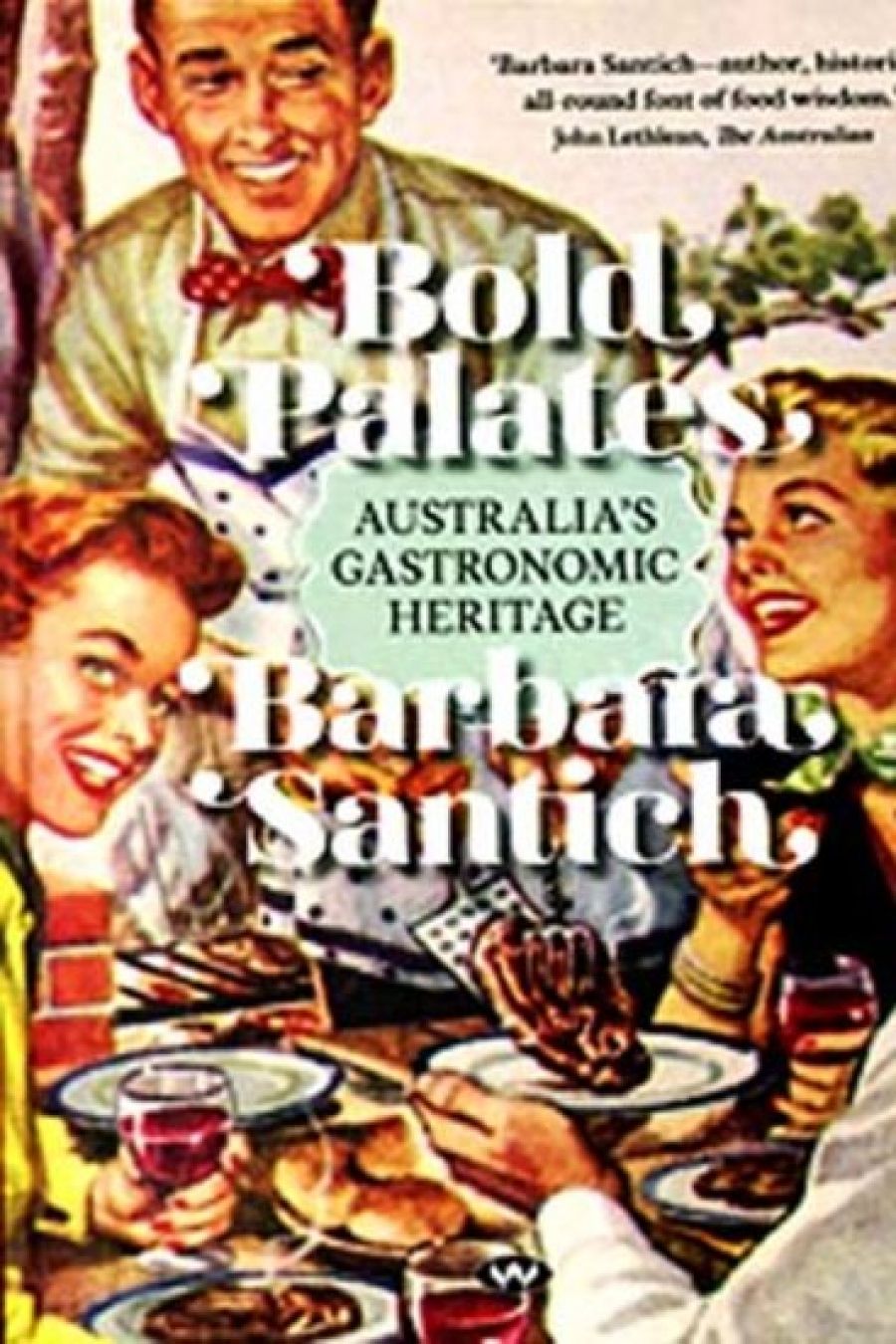
- Free Article: No
- Contents Category: Food
- Review Article: Yes
- Online Only: No
- Custom Highlight Text:
That Barbara Santich has a vast knowledge and understanding of her subject is evident in every vivid and informative page of Bold Palates. The writer sets out to prove that, from the earliest colonial days, Australians improvised and adapted the available food, be it local or imported, familiar or new, and in so doing created the foundation for the distinctive Australian food culture we know today. A huge amount of research has been undertaken in the compilation of this book. It was clearly a productive and joyful task.
- Book 1 Title: Bold Palates
- Book 1 Subtitle: Australia’s Gastronomic Heritage
- Book 1 Biblio: Wakefield Press, $49.95 hb, 326 pp
The style of food we enjoy today in Australia is not simply the result of the postwar influx of immigrants, and it is certainly not the result of the latest outpourings of the celebrity chef movement. It all started years ago when the first settlers, with their imported British customs, stepped ashore. Almost immediately their food traditions and methods of preparation were adapted to suit the new environment and very different produce, though of course there would have been a recalcitrant group among the adventurous who regarded with horror any form of experimentation with unfamiliar ingredients and strange animals.
As Santich points out: ‘Educated colonists with enquiring minds willingly experimented with the food resources of the bush and lived to tell the tale.’ Many early pioneer women eagerly embraced the foreign landscape and enthusiastically went about forging new lives. They were the ones who wrote journals and letters home describing their adventures. Many of these were to do with food, and many are quoted in the book. One indomitable woman, the sort of woman who built the British Empire and whose skills were universally recognised from India to Australia and beyond, was Mrs Lance Rawson of North Queensland. She wrote of the Indigenous population: ‘by nature and instinct they are hunters, and what they use for food you may be quite sure is the best and most wholesome.’
The fact that sheep and cattle thrived in Australia led to an inevitable outcome: the country’s love of meat. Such was the success of the industry that there were problems at times with what to do with the surplus carcasses. From this emerged experiments with preserving meat and, ultimately, a thriving export trade. Since Australians ate meat up to three times a day, they looked for ways to enliven their mutton or beef. They willingly embraced chutneys, spices, and sauces, imported at first but quickly adapted, using local ingredients such as mangoes grown in Queensland.
Adaptation and inventiveness are an evolving theme throughout the book. Baking is one area where the Australian home cook expanded her repertoire of sponge cake recipes to include every sort of filling or topping. I have the feeling that Santich has not only read every available recipe for sponge cakes but has also tried every conceivable version of a lamington. Her enthusiasm for the subject of food and how we approach it in our daily lives is boundless. I now know what to do with the abundance of passionfruit in my back garden.
One custom encouraged by the warmer climate was that of more casual dining. So began the idea of the picnic, an imported notion but one that was taken up with tremendous enthusiasm. After the picnic came the chop picnic, with the cooking of chops on an open fire offering a nostalgic hint of the life of the early settlers in the bush. Then of course came the barbecue. The very thing that has become a worldwide emblem of Australia is actually an idea and name imported from America in the 1920s. But Australians did what they have always done: they stamped their own mark on it.
One food item that is distinctly Australian is the meat pie. In 2010 the pie topped food writer Jill Dupleix’s list of national dishes. Other countries and other cultures have their version of the meat pie, but the Australians have made it their own. Second on the list is Vegemite. Manufactured by Fred Walker and launched in 1924, Vegemite was an imitation of the English creation, Marmite. Nothing could be more Australian than Vegemite. Walker had established credentials for copying a good idea; he had previously taken the very British Bovril to create Bonox.
Over the years Australians have consumed vast quantities of biscuits. The Australian manufacturers, such as Arnott’s, were in fact using the same machines as the British biscuit makers and were therefore producing the same sort of biscuits; to create a difference they invented their own names. Thus the British Garibaldi became the Currant Luncheon. To give them their due, Australian biscuit makers were not always copying their British counterparts; they were clever in inventing biscuits for specific occasions. Swallow & Ariell came up with the Federal.
This wonderful book is beautifully produced and illustrated, with archival images culled from a variety of libraries and sources. It also includes quotes and extracts that further entertain and supplement the author’s exhaustive research. When I started to read the book, I would read the quotes and extracts as I went along, but I found the text so compelling that I had to leave them for later. This is a book I will dip into time and time again.
CONTENTS: SEPTEMBER 2012


Comments powered by CComment